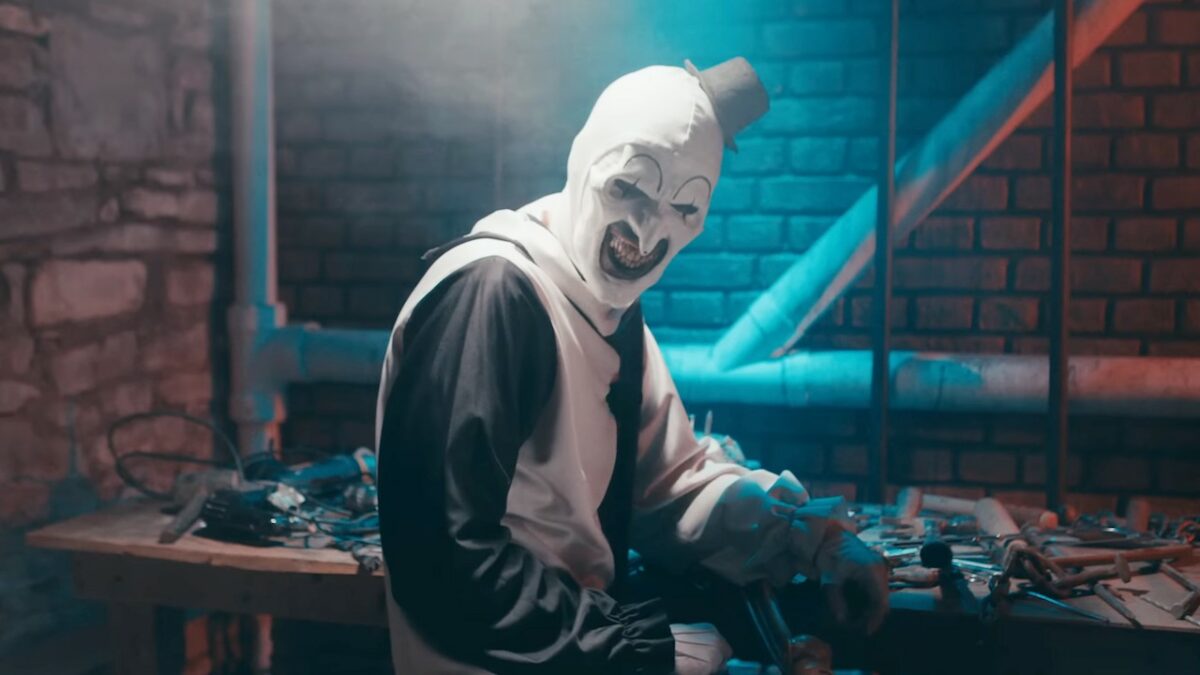
The character of Art the Clown has taken the horror film world by storm, captivating and terrifying audiences alike. As a central figure in the "Terrifier" series, his grotesque appearance and sadistic behavior have led many to ponder the question: why is Art the Clown evil? This article delves into the psychology of horror, the creation of Art, and the cultural implications of his character. With a deep dive into his backstory, motivations, and the reactions he elicits from viewers, we aim to unravel the enigma surrounding this terrifying clown.
Art the Clown is not just a figure of fear; he embodies the very essence of horror that lurks in the shadows of our imagination. The fear he instills is not merely about the gruesome acts he commits, but about what he represents. Clowns, traditionally seen as symbols of joy and laughter, are inverted in Art's portrayal, transforming into a nightmarish figure that challenges our perception of safety and innocence. This juxtaposition raises the question: how does Art's character reflect our deepest fears?
In exploring the origins of Art the Clown and the creative minds behind his character, we unveil the disturbing layers that contribute to his evil persona. From his chilling aesthetic to his unsettling demeanor, every aspect of Art is meticulously crafted to elicit fear. Join us as we dissect the complexities of Art the Clown and answer the pressing question: why is Art the Clown evil?
What is the Backstory of Art the Clown?
Art the Clown first appeared in the short film "Terrifier," directed by Damien Leone. Since then, he has become a staple in horror cinema, particularly with the release of "Terrifier 2." The character is a mute, malevolent clown who delights in causing chaos and suffering. Art's backstory is deliberately left vague, adding to his mystique and allowing audiences to project their own fears onto him. His origins remain shrouded in mystery, but hints suggest a dark past filled with violence and madness.
What Makes Art the Clown Stand Out Among Horror Villains?
Art the Clown differentiates himself from other horror villains through his unique blend of humor and horror. His manic laughter and playful demeanor juxtaposed with brutal violence create a dissonance that unsettles viewers. Unlike traditional horror figures who rely on backstories filled with trauma, Art's lack of explanation for his actions makes him even more terrifying. This unpredictability is a key element of his evil nature.
How Does Art the Clown Represent Our Fear of Clowns?
The fear of clowns, known as coulrophobia, is a phenomenon that has been documented for decades. Art the Clown embodies this fear, transforming the once-beloved icon into a symbol of dread. His exaggerated features, stark black-and-white makeup, and eerie silence amplify the discomfort surrounding clowns. By tapping into this collective fear, Art becomes a representation of the darkness that exists behind a mask of laughter.
What Are the Psychological Implications of Art's Character?
Art the Clown's evil persona has psychological implications that extend beyond the screen. His character raises questions about the nature of evil and the human psyche. The enjoyment that some viewers derive from his sadistic antics may stem from a fascination with the macabre. This duality of fear and fascination speaks to a deeper human curiosity about violence and mortality, challenging our moral boundaries.
Why Do Audiences Relate to Art the Clown?
Despite being a villain, Art the Clown has garnered a significant fanbase. Audiences are drawn to his character for various reasons, including his unpredictability and the thrill of fear. The adrenaline rush associated with horror films creates a unique bond between viewers and characters like Art. This relationship complicates the traditional hero-villain dynamic, as viewers often find themselves captivated by his chaotic charm.
What Role Does Humor Play in Art's Evil Nature?
Humor plays a crucial role in Art the Clown's character, making him a complex villain. His antics often border on slapstick, providing a stark contrast to the horror he inflicts. This blend of humor and violence creates a sense of discomfort, forcing audiences to grapple with their responses. The laughter that accompanies his actions only heightens the tension, prompting the question: can humor coexist with evil?
How Does Art the Clown Reflect Societal Fears?
Art the Clown serves as a mirror reflecting societal fears and anxieties. His character can be seen as a manifestation of the chaos and unpredictability of the modern world. In an era where safety is often an illusion, Art represents the lurking dangers that can emerge unexpectedly. This resonance with contemporary issues makes him a relevant figure in horror, prompting viewers to confront their own fears.
Why is Art the Clown Evil in the Eyes of the Audience?
Ultimately, the question of why is Art the Clown evil can be answered through the lens of audience perception. His actions are undeniably horrific, but the lack of a relatable backstory or motivation makes him an enigma. This ambiguity allows viewers to project their fears onto him, making his evil nature feel personal. As a result, Art becomes a symbol of the darkness that resides within us all.
Conclusion: What Have We Learned About Art the Clown's Evil Nature?
In conclusion, the question of why is Art the Clown evil is multifaceted, encompassing themes of fear, societal reflection, and the complexities of human psychology. Art stands as a testament to the power of horror in exploring the darkest corners of our minds. As audiences continue to engage with his character, they are reminded of the thin line between laughter and terror, and the unsettling truths that lie beneath the surface of our fears.
| Personal Details | Bio Data |
|---|---|
| Character Name | Art the Clown |
| First Appearance | Terrifier (2011) |
| Creator | Damien Leone |
| Portrayed By | David Howard Thornton |
| Film Series | Terrifier |
| Character Traits | Sadistic, Silent, Unpredictable |
ncG1vNJzZmivp6x7p7XGoaugqpGlva2x05qnZ5ufony3wcusmpqmX6y1unnIrGSaqqRiwamxjJyjqK%2BeYrK3tctnn62lnA%3D%3D